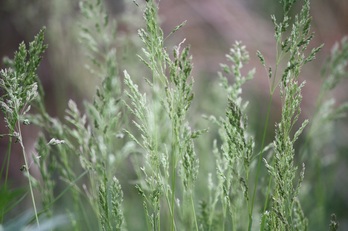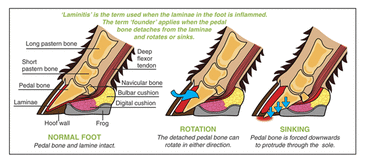by Amy Ortez, DVM
|
|
SPRING GRASSES and Their Invisible Danger
|
Aaahh, Spring! The days are getting longer, the birds are singing, and thanks to spring grasses, the horses and ponies are poised to get laminitis. A vet school professor used to say that every horse is a case of laminitis waiting to happen. No one wants the weather to be more conducive to riding only to be sidelined by a lame horse. Laminitis not only interferes with your riding plans, it threatens your horse's life.
The problem with spring grasses, and sometimes with grasses or feed in general, is the change in sugar content. Horses can tolerate a fair amount of sugar when they are accustomed to consuming it. The problem arises when the sugar content in their food increases dramatically. The population of microflora in the large intestines switches to those that can handle the extra starch production. They create more volatile fatty acids, gas and lactic acid. This kills some of the microbes and leads to toxin production which can lead to laminitis. General rules to consider:
Laminitis is terrifying. Many horses have lost their lives because of the unrelenting pain it causes. Being conscientious about the changes in sugar content in both the forages and grain fed to your horses is extremely important when trying to prevent laminitis from occurring. |
Diagram of a healthy hoof compared to a laminitic hoof
|
|
DISCLAIMER
The information contained on this website is not meant to diagnose, treat, cure, or prevent any disease. Information found on this website is meant for educational and informational purposes only. When in doubt, consult your veterinarian. |









